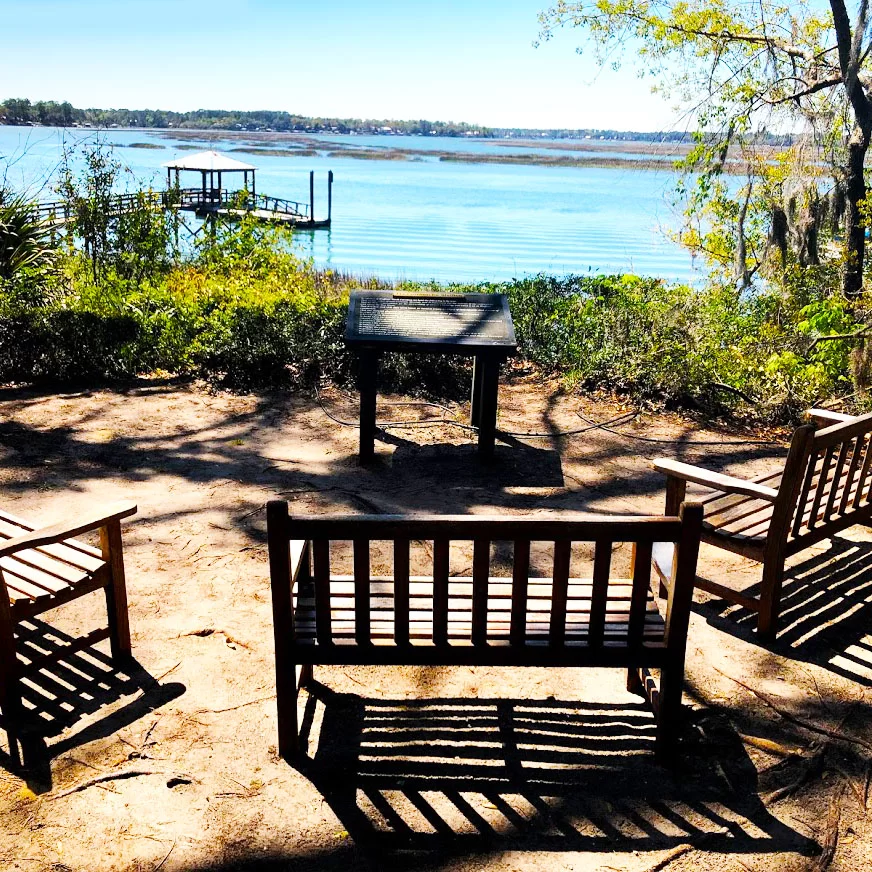Step back in time to visit the historic wonders of this small town.

Photo by Carmen Pinckney.
Many travelers enjoy driving Highway 17, between Charleston and Savannah. The naturally beautiful landscape of Yemassee is located between the two cities. A simple turn off Hwy 17 onto Old Sheldon Church Road is like stepping back in time. Travel up the road for about two miles and see the church ruins on the right. Parking is located across the street. This church was burned during the Revolutionary War, rebuilt and then destroyed again during the Civil War. There is a debate as to whether the church was burned or disassembled during the Civil War.

Photo by Carmen Pinckney.
The following is from an article in the April 1969 Sandlapper Magazine by Charles E. Thomas, “The Picturesque Ruins of Old Sheldon Church”. “The official South Carolina report on the ‘Destruction of Churches and Church Property,’ after the War Between the States, described Sheldon’s second burning: All that was combustible was consumed…, its massive walls survive the last as they did the former conflagration, Bishop Thomas wrote, Exactly as it happened a hundred years before in 1779, when General Prevost, marching from Savannah into South Carolina burned the Church, so now in February 1865, General Sherman marching from Georgia into South Carolina, burned it a second time.”
However, another account found more recently states that the church was not burnt at all.

In a letter dated February 3, 1866, Beaufort’s Milton Leverett wrote, “Sheldon Church not burnt. Just torn up in the inside but can be repaired.” The inside of the church was apparently gutted to reuse materials in rebuilding the area homes that were burnt by Sherman’s army. Today the Old Sheldon Church Ruins are protected by fencing to ensure their protection. Visitors can meander all around the structure while maintaining a safe distance from the ancient walls.
After visiting the ruins, continue up Old Sheldon Church Road and head into Yemassee. Cross the railroad tracks and keep left. Cross Hwy 17A and turn left onto Hwy 68. Head out of town and to the other side of I-95. Take a left at Davidson Tower Road and another left at the end onto Pocotaligo Road. Travel about two miles to find two more hidden gems.

Sheldon Chapel Episcopal, formerly of Prince William Parish sits proudly on the left at 25481 Pocotaligo Road. Dated to 1745, the church was dismantled and used to build bridges by Gen. Sherman during the Civil War then rebuilt in 1898.

photo by Carmen Pinckney.
If you turn left directly after the church, you will come upon another historic structure. Fans of the movie Forest Gump will recognize this church. Forrest went to church here to pray that he and Lieutenant Dan would find shrimp. Built in 1833 this chapel was used for seasonal worship. It is the only pre-Civil War structure in this area. During the war the chapel was used as a hospital and campsite by Union troops.
Retrace your path and come back to Old Sheldon Road. Turn right onto Cotton Hall. This will lead you back to highway 17 and past the gates and oak avenues of two beautiful plantations. While the homes aren’t visible to passersby, the entrances are photo worthy.

A drive into Yemassee is a fun way to add a historical detour into your drive down Highway 17. We hope you enjoy the scenery. For more interesting pit stops in the South Carolina Lowcountry visit https://southcarolinalowcountry.com/category/blog/.

Photo by Carmen Pinckney.


































 The trails alternate between gravel, boardwalk and natural footing. The views around the lake are pretty, and the trails are relaxing.
The trails alternate between gravel, boardwalk and natural footing. The views around the lake are pretty, and the trails are relaxing. 



